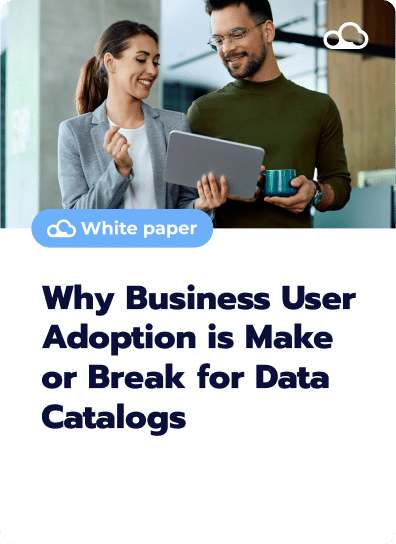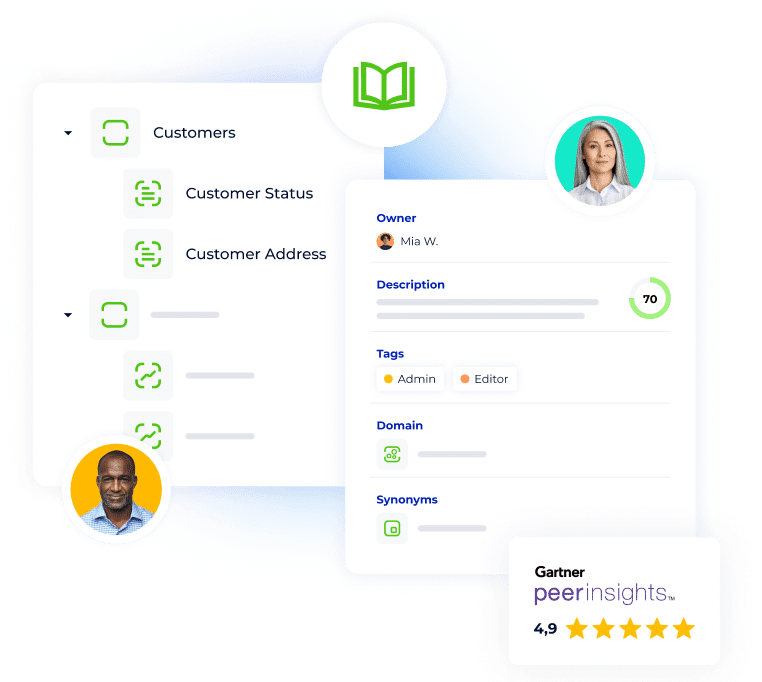For many organizations, change management to “becoming data-driven” is a long-term goal with no real path set to achieve it. Often, even starting the journey of organizational data management can be a daunting task that doesn’t offer a one-size-fits-all first step.
Implementing the roles of Chief Data Offers (CDOs) and Chief Data Analytics Officers (CDAOs) is essential for accelerating organizational change toward a data-centric culture working to achieve data-driven business goals.
Keep reading to get an inside look at Gartner's top tips for successful change management initiatives.
Mastering data-driven change management
It’s essential for organizations to create a personalized plan to handle the upcoming change of transitioning from unorganized, raw data to standardized, documented data catalogs.
As the catalysts and guides of this plan, CDAOs and CDOs must be able to develop effective change management plans for data and analytics programs and oversee their implementation. Gartner suggests a multistep approach to achieving change synergy:
- Prioritize your focus: Successful data leaders should leverage data and analytics to achieve mission- and goal-specific outcomes. This includes prioritizing and quantifying important items by identifying business drivers and aligning them with the organization’s objectives.
- Establish a change management team: When forming a team to help the entire organization’s transition, it’s crucial to include members with diverse experience, specialties, and seniority levels to ensure you get an insight into unique perspectives. It’s also essential to include internal and external stakeholders who may be affected by these changes to ensure a well-rounded view of potential change impact.
Business Glossary
Help users speak a common language & share critical insights
The Data Knowledge Catalog’s Business Glossary software bridges the gap between business, IT, and technical teams to help users speak the same language, share critical insights, and drive informed decision-making practices based on reliable datasets.
- Create real-world scenarios that would benefit from your proposed changes: Use cases are essential in proving the value of any proposed organizational change. When developing data-driven change stories, start with your organization’s desired outcomes and discuss ways to provide concrete actions to bridge the gap between your current and target state.
- Try “culture hacking” techniques to start things off: Culture hacking, or the practice of applying small techniques that drive immediate results, is a good method to spark excitement for change in an organization. Break down high-level goals into small, actionable metrics using a mix of what’s working and some new techniques to ease everyone into change.
- Address change resistance and barriers to change: Identifying and mitigating items keeping your organization from changing is an essential part of moving forward to launch an updated data and analytics initiative. Data leaders should listen to members of the organization who will potentially be affected by the change to understand the factors contributing to resistance and identify potential solutions.
Resistance to change is normal and should be addressed in all change management plans with creative solutions using real-world use cases.
As the catalysts for organizational change, CDOs and CDAOs should adequately plan for the upcoming needs, concerns, and solutions for the entire organization to fully benefit from becoming more data-driven.
Fueling smarter decisions for
200+ industry powerhouses.










